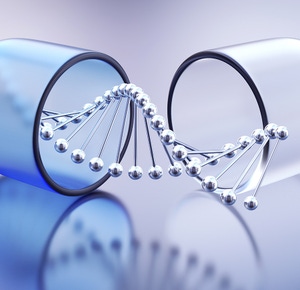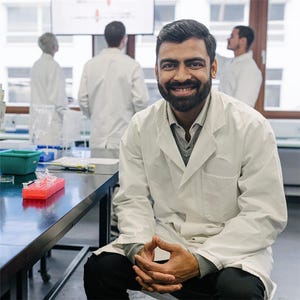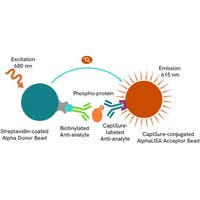

AlphaLISA SureFire Ultra Human TREM2 Aggregation Kit, 100 Assay Points
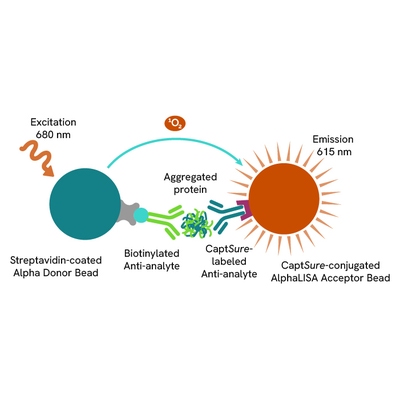

 View All
View All
AlphaLISA SureFire Ultra Human TREM2 Aggregation Kit, 100 Assay Points




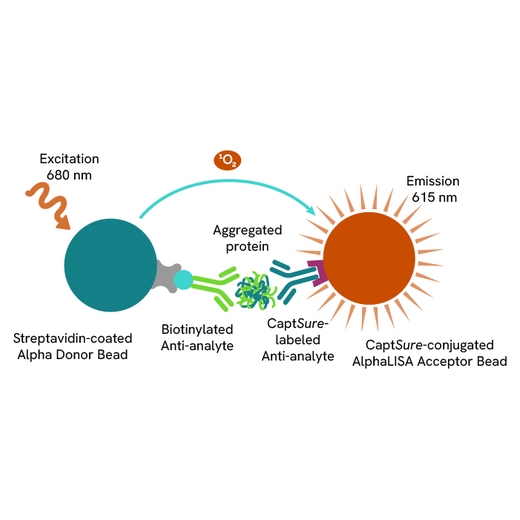



The AlphaLISA™ SureFire® Ultra™ Human Aggregate TREM2 assay is a sandwich immunoassay for quantitative detection of aggregate TREM2 in cellular lysates using Alpha Technology.
| Feature | Specification |
|---|---|
| Application | Cell Signaling |
| Sample Volume | 30 µL |
The AlphaLISA™ SureFire® Ultra™ Human Aggregate TREM2 assay is a sandwich immunoassay for quantitative detection of aggregate TREM2 in cellular lysates using Alpha Technology.




AlphaLISA SureFire Ultra Human TREM2 Aggregation Kit, 100 Assay Points




AlphaLISA SureFire Ultra Human TREM2 Aggregation Kit, 100 Assay Points




Product information
Overview
The Triggering Receptor Expressed on Myeloid Cells 2 (TREM-2) family of receptors is implicated in the regulation of the immune system's numerous cell types, such as neutrophils, monocyte/macrophages, microglia, and dendritic cells. Human cerebrospinal fluid (CSF) has been shown to include soluble TREM-2, which has been reported to be increased in people with multiple sclerosis and other inflammatory neurological illnesses compared to those without such conditions.
The AlphaLISA SureFire Human Aggregate TREM2 Detection Kit is a sandwich immunoassay for the quantitative detection of aggregate TREM2 in cellular lysates, using Alpha Technology.
Formats:
- The HV (high volume) kit contains reagents to run 100 wells in 96-well format, using a 60 μL reaction volume.
- The 500-point kit contains enough reagents to run 500 wells in 384-well format, using a 20 μL reaction volume.
- The 10,000-point kit contains enough reagents to run 10,000 wells in 384-well format, using a 20 μL reaction volume.
- The 50,000-point kit contains enough reagents to run 50,000 wells in 384-well format, using a 20 μL reaction volume.
AlphaLISA SureFire Ultra kits are compatible with:
- Cell and tissue lysates
- Antibody modulators
- Biotherapeutic antibodies
Alpha SureFire kits can be used for:
- Cellular kinase assays
- Receptor activation studies
- Screening
Specifications
| Application |
Cell Signaling
|
|---|---|
| Automation Compatible |
Yes
|
| Brand |
AlphaLISA SureFire Ultra
|
| Detection Modality |
Alpha
|
| Lysis Buffer Compatibility |
Lysis Buffer
|
| Product Group |
Kit
|
| Sample Volume |
30 µL
|
| Shipping Conditions |
Shipped in Blue Ice
|
| Target |
TREM2
|
| Target Class |
Phosphoproteins
|
| Target Species |
Human
|
| Technology |
Alpha
|
| Therapeutic Area |
Neuroscience
|
| Unit Size |
100 assay points
|
Video gallery


AlphaLISA SureFire Ultra Human TREM2 Aggregation Kit, 100 Assay Points


AlphaLISA SureFire Ultra Human TREM2 Aggregation Kit, 100 Assay Points


How it works
Aggregation-AlphaLISA SureFire Ultra assay principle
The Aggregation-AlphaLISA SureFire Ultra assay measures the aggregates level of a protein target in a cell lysate.
The Aggregation-AlphaLISA Surefire Ultra assay uses one antibody which recognizes an exposed epitope on the aggregated target protein. AlphaLISA assays require two bead types: Acceptor and Donor beads. Acceptor beads are coated with a proprietary CaptSure™ agent to specifically immobilize the assay specific antibody, labeled with a CaptSure™ tag. Donor beads are coated with streptavidin to capture the detection antibody, which is biotinylated. In the presence of targeted protein, the antibody brings the Donor and Acceptor beads in close proximity whereby the singlet oxygen transfers energy to excite the Acceptor bead, enabling the generation of a luminescent Alpha signal. The amount of light emission is directly proportional to the quantity of aggregated protein present in the sample.

Aggregation-AlphaLISA SureFire Ultra two-plate assay protocol
The two-plate protocol involves culturing and treating the cells in a 96-well plate before lysis, then transferring lysates into a 384-well Optiplate plate before the addition of Aggregation-AlphaLISA SureFire Ultra detection reagents. This protocol enables the cells viability and confluence to be monitored. In addition, lysates from a single well can be used to measure multiple targets

Aggregation-AlphaLISA SureFire Ultra one-plate assay protocol
Detection of aggregated target protein with AlphaLISA SureFire Ultra reagents can be performed in a single plate used for culturing, treatment, and lysis. No washing steps are required. This HTS designed protocol enables miniaturization while maintaining robust AlphaLISA SureFire Ultra quality.
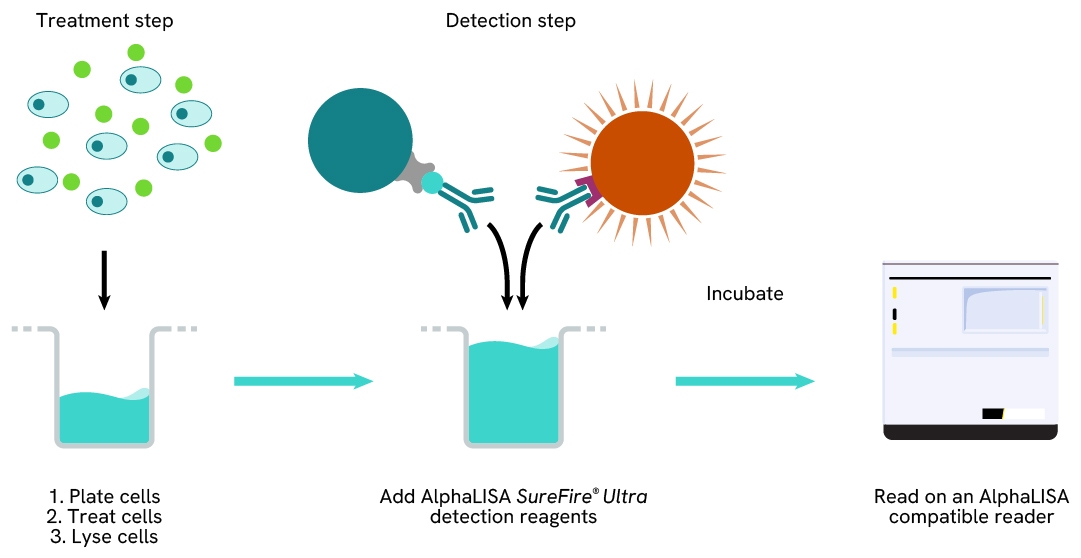
Assay validation
TREM2 Activator induces aggregation of TREM2 in THP-1 and primary macrophages
THP-1 cells were treated with 35 ng/mL TGFb for 18 hours at 37°C, 5% CO2. Cells were harvested and seeded in a 96-well plate (400,000 cells/well) in HBSS + 0.1% BSA and then treated with 20 µM TREM2 Activator (MedChemExpress, Cat # HY-148095) for various time points.
After treatment, cells were lysed with the addition of 50 µL of 5X Lysis Buffer for 10 minutes at RT with shaking (350 rpm). TREM2 Aggregate levels were evaluated by AlphaLISA SureFire Ultra. For the detection step, 10 µL of cell lysate (approximately 16,000 cells) were transferred into a 384-well white OptiPlate, followed by 5 µL of Acceptor mix and incubated for 1 hour at RT. Finally, 5 µL of Donor mix was then added to each well and incubated for 1 hour at RT in the dark.
TREM2 activator induced TREM2 Aggregate within just 2 minutes, peaking at 10-30 minutes.
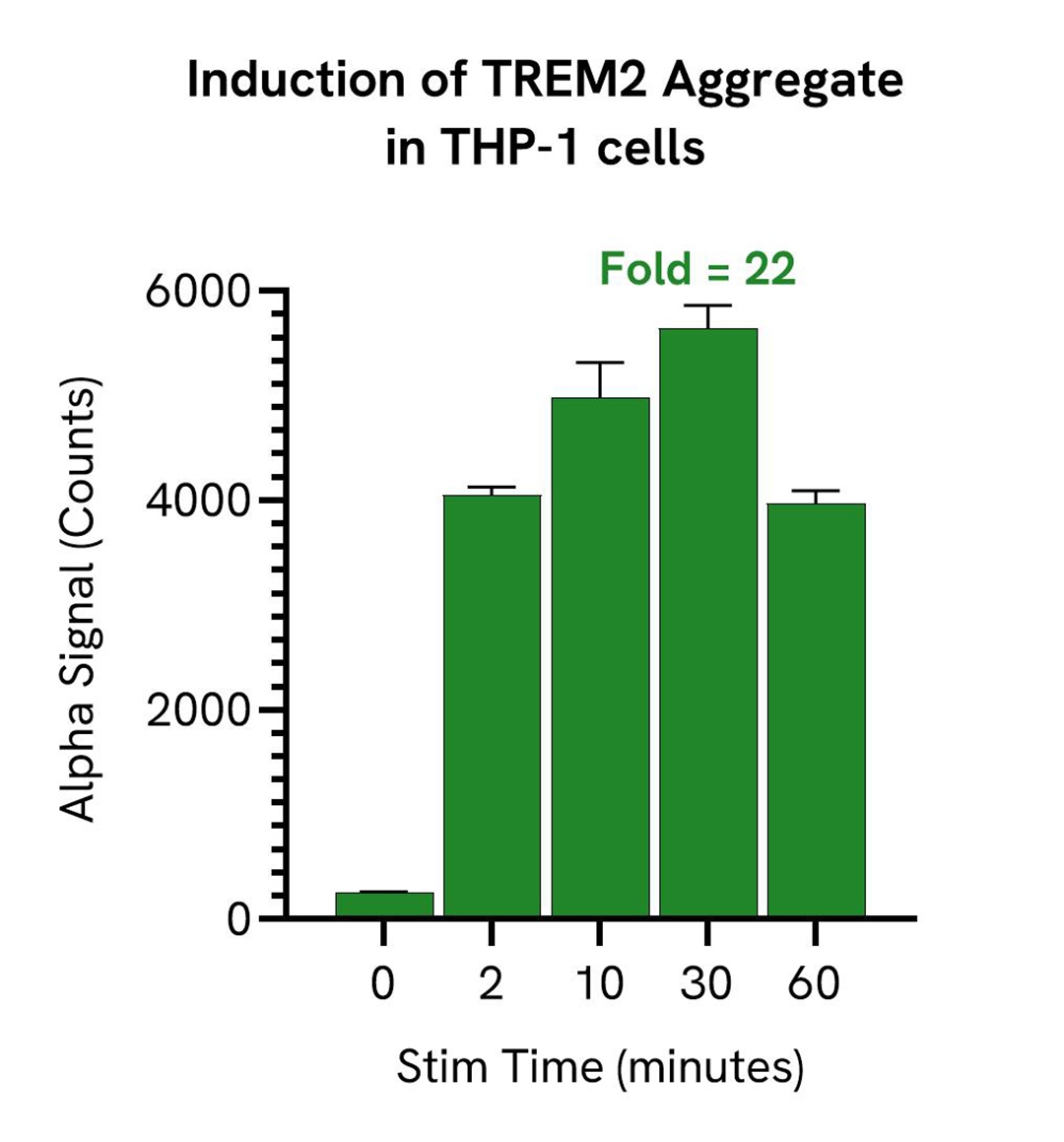
PBMCs were isolated from healthy donors and cultured for 6 days in complete DMEM containing 20 ng/mL M-CSF to differentiate them into macrophages. Macrophages were seeded in a 96-well plate (40,000 cells/well) in complete DMEM, and incubated overnight at 37°C, 5% CO2. Cells were treated with 35 ng/mL TGFb for 18 hours and then treated with 20 µM TREM2 Activator (MedChemExpress, Cat # HY-148095) for various time points.
After treatment, cells were lysed in 50 µL of Lysis Buffer for 10 minutes at RT with shaking (350 rpm). TREM2 Aggregate levels were evaluated by AlphaLISA SureFire Ultra. For the detection step, 10 µL of cell lysate (approximately 8,000 cells) were transferred into a 384-well white OptiPlate, followed by 5 µL of Acceptor mix and incubated for 1 hour at RT. Finally, 5 µL of Donor mix was then added to each well and incubated for 1 hour at RT in the dark.
As expected, TREM2 activator induced TREM2 Aggregate very quickly peaking at 10-30 minutes.
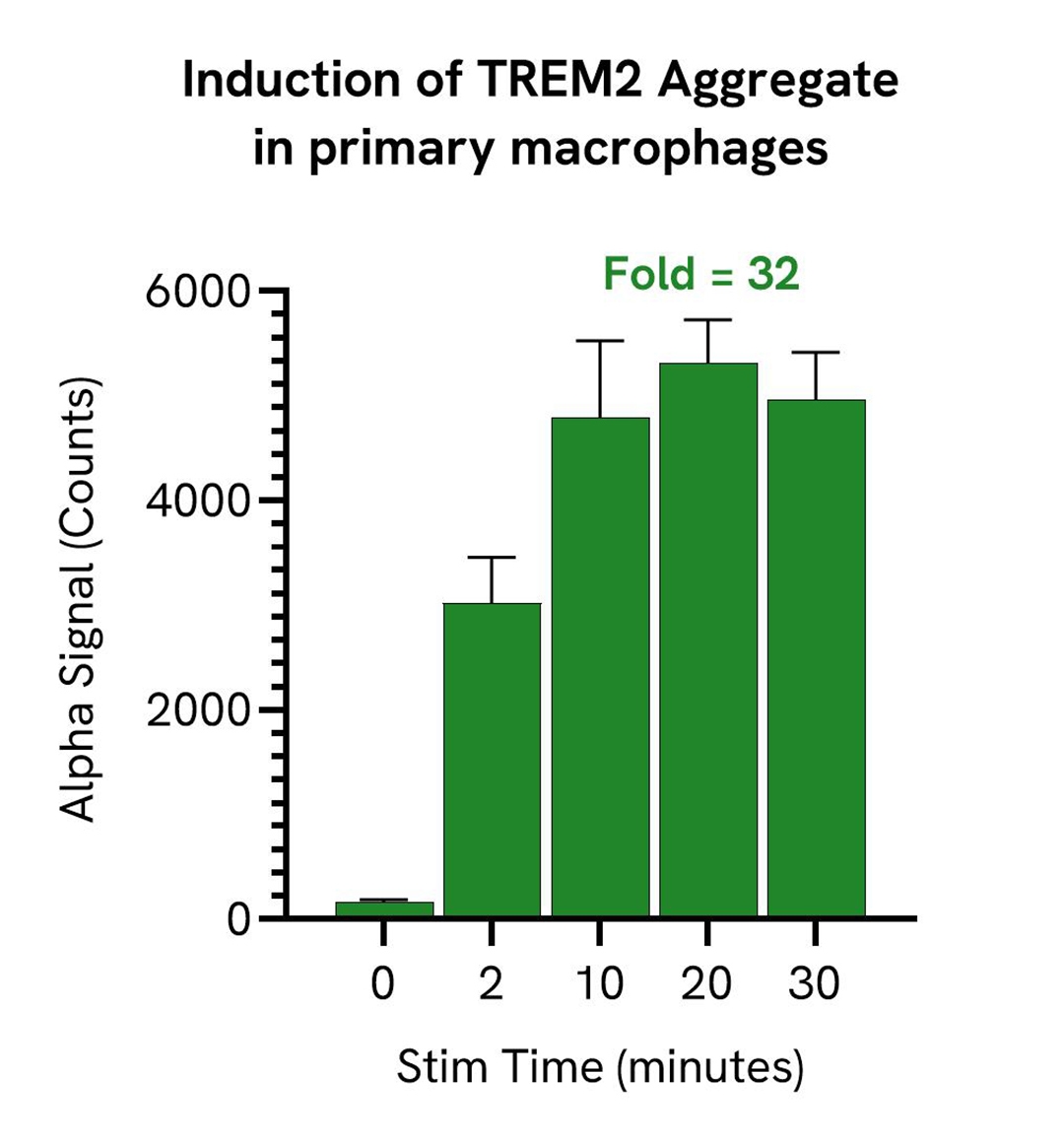
TREM2 Activator induces TREM2 aggregation in a dose-dependent manner
THP-1 cells were treated with 35 ng/mL TGFb for 18 hours at 37°C, 5% CO2. Cells were harvested and seeded in a 96-well plate (400,000 cells/well) in HBSS + 0.1% BSA and then treated with the indicated concentrations of TREM2 Activator (MedChemExpress, Cat # HY-148095) for 10 minutes.
After treatment, cells were lysed with the addition of 50 µL of 5X Lysis Buffer for 10 minutes at RT with shaking (350 rpm). TREM2 Aggregate, TREM2/DAP12 Complex and Total TREM2 levels were evaluated using respective AlphaLISA SureFire Ultra assays. Lysates were further diluted 1:10 in Lysis buffer for TREM2 Total assay. For the detection step, 10 µL of cell lysate (approximately 16,000 cells or 1,600 cells for Total TREM2) were transferred into a 384-well white OptiPlate, followed by 5 µL of Acceptor mix and incubated for 1 hour at RT. Finally, 5 µL of Donor mix was then added to each well and incubated for 1 hour at RT in the dark.
As expected, TREM2 Aggregate as well as TREM2/DAP12 Complex were upregulated in a dose-dependent manner, while TREM2 total levels remained unchanged.
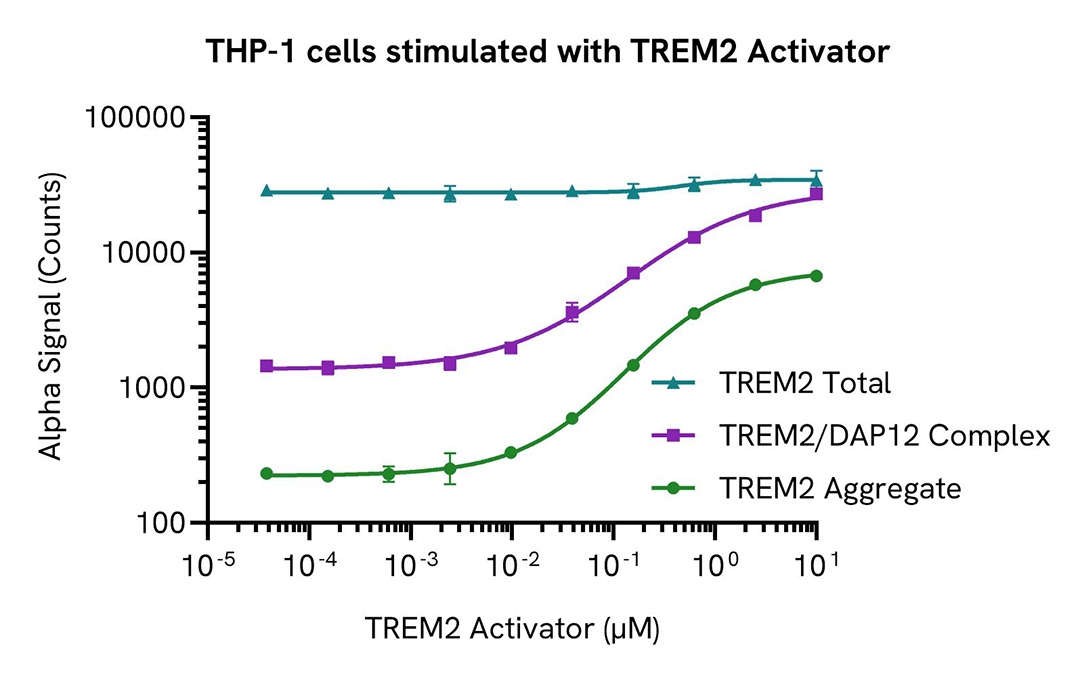
Resources
Are you looking for resources, click on the resource type to explore further.
This guide outlines further possible optimization of cellular and immunoassay parameters to ensure the best possible results are...
The definitive guide for setting up a successful AlphaLISA SureFire Ultra assay
Several biological processes are regulated by...
Discover Alpha SureFire® Ultra™ assays, the no-wash cellular kinase assays leveraging Revvity's exclusive bead-based technology...
This document includes detailed tables listing HTRF™, AlphaLISA™ SureFire® Ultra™, and Alpha SureFire® Ultra™ Multiplex assays...
Loading...


Recently Viewed
How can we help you?
We are here to answer your questions.





